A Treasure Trove of Queer History
When historian Alice Friedman learned about Max Ewing — a musician, visual artist, photographer, and habitué of queer nightlife New York City in the 1920s and ’30s — while researching a project about queer and nontraditional families at the Beinecke Rare Book and Manuscript Library at Yale University in 2018, she couldn’t believe what she’d found.
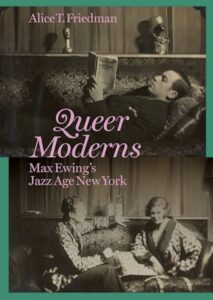
“I realized that I had hit on a treasure trove of cultural history, and queer history in particular,” says Friedman, who is professor emerita of architectural history at Wellesley College. “Ewing just jumps off the page.”
Ewing’s archive at Yale is the basis for Friedman’s latest book, Queer Moderns: Max Ewing’s Jazz Age New York (2025), which she will discuss with designers Cheryl and Jeffrey Katz at Stanley (494 Commercial St., Provincetown) at 6 p.m. on Saturday, July 26.
After moving to New York from Ohio in 1923, Ewing wrote unusually rich and detailed letters to his family, leaving what Friedman calls “an enormous intact archive of letters, photos, and other ephemera.” From sculptures to scrapbooks, his collection traces a queer, interracial community of artists and musicians that is largely absent from other archives.
“He goes into the kind of detail that you dream about,” says Friedman. “And his experience gives us an amazing lens not just into bohemian or avant-garde circles but also into the queer experience.”
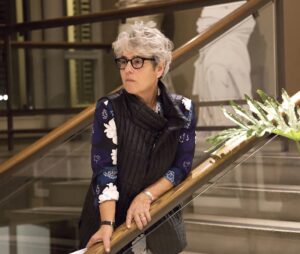
Ewing created a kind of three-dimensional scrapbook in his apartment on West 31st Street in Manhattan, filling a walk-in closet with images of queer icons such as Oscar Wilde and Gertrude Stein. He invited friends from Manhattan, Harlem, and Paris to admire this “Gallery of Extraordinary Portraits,” many of whom saw their own likenesses on the walls.
“That interest in the closet, in physical space — and queer space — is the theme of the book,” says Jeffrey Katz.
Friedman says booksellers have hesitated to promote Queer Moderns amid the Trump administration’s assault on LGBTQ rights. At Stanley, she hopes to show how the book counters revisionist narratives that erase queer people’s important role in U.S. history. Events like these, she adds, give her hope.
“It’s clear to me that people are still interested in reading and talking about queer history,” she says.
While admission is free, a $20 donation is suggested. See 20summers.org for information. —Anna Salvatore
Tooting Their Own Horns
The first song that the all-female French horn quartet Genghis Barbie played together was Queen’s “Somebody to Love.” It was 2010, and the four professional musicians were jamming in member Alana Vegter’s New York City apartment.

“It was just so fun,” says band member Danielle Kuhlmann. “And not only was it fun, but it also sounded really good.” Since then, Genghis Barbie has performed widely while maintaining individual careers in symphony orchestras.
The band will perform at the Federated Church of Hyannis (320 Main St.) at 5:30 p.m. on Tuesday, July 29, kicking off this year’s Cape Cod Chamber Music Festival, which will include 10 performances through Aug. 22.
Genghis Barbie “is a band of ’90s kids,” says Kuhlmann. That’s why three of them have Spice Girls-inspired nicknames: Kuhlmann is Velvet Barbie, Vegter is Freedom Barbie, and newest member Julie Thayer is Tiger Barbie. (Rachel Drehmann departs from the pattern — she’s called Attila the Horn.) But how does Genghis Khan relate to Barbie? The band name, explains Kuhlmann, came from a childhood friend who drew a comic strip featuring a woman warrior named Genghis Barbie when she was five years old.
Each member of the quartet plays the French horn and sings, though Kuhlmann is the main vocalist. Their repertoire includes covers of everything from Chappell Roan to ’90s power ballads. Occasionally, they’ll play something classical, usually orchestral music, string quartets, or choral music arranged for their ensemble.
“The French horn is unique because it has a really wide range,” Kuhlmann says. “Most brass instruments only have a couple octaves. But we actually have more than four. We can play really high, really low, and everywhere in between.” Because the horn is “incredibly physically demanding” due to its small mouthpiece, Kuhlmann says, the musicians will rotate top, middle, and bottom parts during a concert or even within a song. “We only have four people, but we’re playing pop music,” she says. “We have to supply the drums, bass, melody, harmony, adlibs, and vocal parts. There’s not a lot of rest, if any.”
In their cover of “Cool for the Summer” by Demi Lovato, the timbre of the four horns lends a kind of melancholy to the upbeat pop song. The musicians dexterously trade the intricate bass line and melody, making the pop hit into a jubilant extended fanfare.
Genghis Barbie is definitely a departure from the four women’s careers as classical musicians, Kuhlmann says. “This is our Barbie alter-ego.”
The concert is free. See capecodchambermusic.org. —Eve Samaha
A Murder Mystery Romp That Touches on Grief
Shortly after the 2020 Covid lockdowns, Karen Dukess and her sister Laura traveled to the Peak District in north central England. “I wasn’t planning to write a novel,” she says. But by the time Dukess returned home, she knew that her latest book, Welcome to Murder Week, would be set in a fictional English village she named Willowthrop.
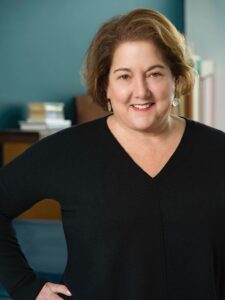
The insular Willowthrop resembles Truro — the setting for Dukess’s first novel, The Last Book Party (2019) — where her family has a summer home. “My favorite place to write,” she says, “is my mother’s studio, facing the Truro harbor and the bay.”
A genre-bending romp, Welcome to Murder Week is built around a scripted murder fabricated to attract American tourists who role-play as detectives.
Dukess’s novel centers on three solo travelers: Wyatt, a would-be actor from New Jersey whose ornithologist husband gave him the murder mystery experience; Amity, a romance novelist from California hoping to be inspired to write a new book; and Cath, from Buffalo, who becomes infatuated with Dev, a biracial bar owner with whom she begins an affair. Cath joined the tour while grieving the sudden death of her mother, and her healing becomes the novel’s core.
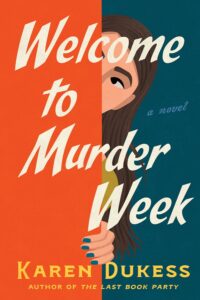
Earlier this month, Dukess’s mother, painter Mona Dukess, died at 89. “I started out intending to write this really fun, light novel, but it does have a lot about grief, which may be related to the fact that my mother was approaching 90,” says Dukess.
She is planning to continue the stories of her three protagonists. For her next novel, “I will continue to engage these characters, but narrated by Amity, with a little more of Wyatt, and Cath in the background,” she says.
There will be an author talk and book signing with Dukess at 7 p.m. on Saturday, July 26 at East End Books in Provincetown and at 7 p.m. on Sunday, July 27 at Wellfleet Public Library. For more information, see karendukess.com. —Susan Rand Brown
Geometry and Color That Organizes
Geometry is a guiding principle for Brooklyn artist Matt Neuman. “I think of geometry as humanity’s most fundamental tool for organizing information,” he says. Neuman uses precise geometric shapes both to organize his compositions and as delivery vehicles for color.
New selections from Neuman’s ongoing series of prints and paintings are on view at On Center Gallery (352 Commercial St., Provincetown).
Painting and printmaking overlap in Neuman’s work. “They are like two hands that inform each other and allow for the imagery to grow,” he says.
His works on paper are layered prints made from a set of wooden blocks that he carves using a computer numerical control (CNC) machine, a device that uses software to control the cutting, carving, or engraving of materials. The composition is fixed from the beginning based on the geometric shapes carved into the blocks, but the mechanical precision is balanced with a painterly application of colorful inks.

Neuman’s works foreground bright and deep colors, with nuance provided by the relationships between colors. The color choices happen as Neuman is printing each layer and are not planned. This way, he says, each print is unique, and the final works can vary a great deal.
This approach to composition is evident in a recent series of collaged prints titled Resonance. All the prints use concentric circles as repeating elements. In Resonance_4, four square prints are collaged together to create a larger composition. The variations in color and gestural use of ink between and around the concentric circles make areas of the print seem to vibrate.
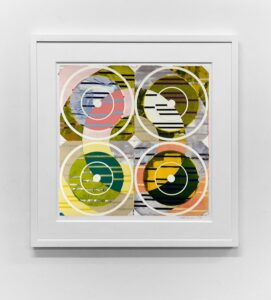
Neuman’s paintings derive from his printmaking practice. Element24_Pb2 and Element24_Ag3 are part of a series that references the natural world, the cosmos, and physics — all interests of the artist. The paintings are created with layers of acrylic paint applied using stencils on shaped wood panels. The shape of each panel reflects the shapes in the interior of the image.
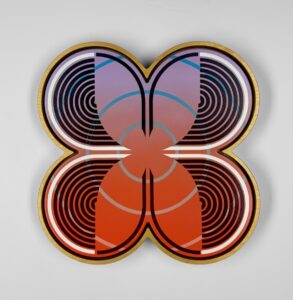
These pieces also rely on gradient color. For Neuman, gradients are essential to the nature of seeing and the perception of light. He juxtaposes these soft color transitions with the hard-edged geometry that emphasizes human-centered design, achieving his goal of “a high level of precision, color harmony, and balance.”
There will be an opening reception for the exhibition on Friday, July 25; the show is on view until July 30. See oncentergallery.com. —Antonia DaSilva
Bucking the Reputation of the Humble Banjo
Tray Wellington says he first heard the sound of a banjo when he was a “starry-eyed member” of his middle school’s Mountain Music Club in Ashe County, N.C., where he grew up. He’s been playing the instrument ever since.

Wellington has released an EP and two full-length albums, including Detour to the Moon last year. On Sunday, July 27, Wellington and his band will play at Payomet Performing Arts Center in North Truro.
The voice of the banjo is unique. With five strings — unlike the guitar’s six — and a small, round body called a “pot,” the instrument lacks “sustain” — how long a sound continues after it is initially produced. Unlike a bowed fiddle, a plucked banjo can’t “sing” indefinitely. Wellington considers that quality a challenge. With vibrato and extended “rolls” — right-hand plucking patterns that ripple over the instrument — he does what he can to make the banjo resonate.
Even before he took up the banjo, Wellington was surrounded by music. He played the trombone in his middle school band and was close to his grandfather, who owned hundreds of CDs and tapes. “Music was a part of every activity we did together,” says Wellington.
Genre doesn’t constrain Wellington. “People often get put into these boxes,” he says. “They have all these rules.” In bluegrass music, perhaps the genre most commonly associated with the banjo, there are rules of harmonic progression. “You have to play your instrument this way, or you have to kick off a song this way,” says Wellington. “I don’t think that’s necessarily true.”
But don’t get him wrong: Wellington says that rules are important, and he loves to listen to traditional music. “I do care about what people did before me,” he says. “But I’m not concerned with following that same pattern in my own music.” On Detour to the Moon, mostly composed of originals, he covers a Kid Cudi song, “Pursuit of Happiness,” and a Duke Ellington tune, “Caravan.”
Wellington remembers a conversation he had with musician Béla Fleck: “He said that sometimes people are so concerned about what style they’re playing that they lose the music behind it.” Whether it’s banjo on a hip-hop song, a traditional bluegrass tune, or a jazz standard, “as long as you’re doing the song justice,” says Wellington, “it doesn’t really matter.” —Dorothea Samaha



